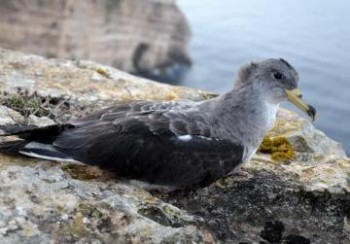Pierre Defos du Rau, (Office National de la Chasse et de la Faune Sauvage, Station Biologique de la Tour du Valat, Le Sambuc, France) and colleagues report in the Journal of Ornithology on a new global estimate for Scopoli’s Shearwater Calonectris diomedea.
The paper’s abstract follows:
“Scopoli’s Shearwater (Calonectris diomedea) is a Procellariiform endemic to the Mediterranean Basin which is considered to be vulnerable in Europe due to recent local declines and its susceptibility to both marine and terrestrial threats. In the 1970s–1980s, its population size was estimated at 57,000–76,000 breeding pairs throughout the Mediterranean Basin, with the largest colony, estimated at 15,000–25,000 pairs, found on Zembra Island, Tunisia. The objectives of our study were to re-estimate the size of the breeding population on Zembra Island, to reassess the global population size of the species, and to analyse the implications of these findings on status and conservation of this species in the Mediterranean. Using distance sampling, we estimated the Zembra breeding population to be 141,780 pairs (95 % confidence interval 113,720–176,750 pairs). A review of the most recent data on populations of this species throughout the Mediterranean Basin led us to estimate its new global population size at 141,000–223,000 breeding pairs. Using the demographic invariant and potential biological removal approaches, we estimated the maximum number of adults which could be killed annually by all non-natural causes without causing a population decline to be 8800 (range 7700–9700) individuals, of which could be 3700 breeders. Although these results are less alarming in the context of species conservation than previously thought, uncertainties associated with global population size, trends and major threats still raise questions on the future of this species. More generally, we show how a monitoring strategy for a bird supposed to be relatively well known overall can be potentially misleading due to biases in survey design. The reduction of such biases would therefore appear to be an unavoidable prerequisite in cryptic species monitoring before any reliable inference on the conservation status of the species can be drawn.”

Scopoli's Shearwater fledgling
Reference:
Defos du Rau, P. and 20 others 2015. Reassessment of the size of the Scopoli’s Shearwater population at its main breeding site resulted in a tenfold increase: implications for the species conservation. Journal of Ornithology DOI 10.1007/s10336-015-1187-4.
John Cooper, ACAP Information Officer, 01 April 2015

 English
English  Français
Français  Español
Español